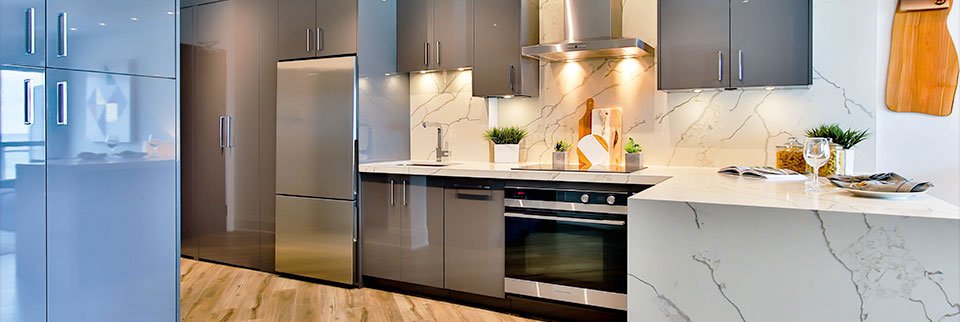
2023/02/22
Commercial sterilization cabinet
Commercial sterilization cabinet is a tool that sterilizes and disinfects utensils, tableware, towels, clothing, beauty and hairdressing utensils, medical devices and other items by means of ultraviolet, far infrared, high temperature and ozone. The shape of the cabinet is generally box-shaped, and most of the cabinet body is made of stainless steel. As one of the important electrical appliances in modern kitchen, commercial disinfection cabinet is widely used in hotels, restaurants, schools,salon shops, canteens and other places.
According to different disinfection requirements, disinfection cabinets are divided into ozone disinfection cabinets, far infrared disinfection cabinets, ultraviolet disinfection cabinets, high temperature disinfection cabinets and low temperature disinfection cabinets.
Ozone disinfection cabinets
Ozone is a light blue gas, which converts oxygen molecule (O 2) into ozone molecule (O 3) by ozone generator under the action of high pressure pulse. Ozone is a kind of intensifier and fungicide. Ozone can enter the interior of bacterial cell, destroy its structure and oxidase, and play the role of disinfection and sterilization. It can sterilize more than 90% of the general natural bacteria and 99% of the intestinal infectious diseases. The greater the ozone concentration in the disinfection cabinet, the better the germicidal efficacy. Atmosphere also contains a small amount of ozone, but the concentration is generally low at 0.02mg/m3. According to authoritative experts, when the concentration of ozone in the atmosphere is less than 0.2mg/m3, it is harmless to the human body. Only when the concentration of ozone is too high for a long time, it will affect the human respiratory system. However, ozone has active characteristics and poor stability. When meeting water in the air not more than 2 minutes, it will be reduced to oxygen. Therefore, after disinfection, open the cabinet door as far as possible to dissipate the residual ozone odor in the cabinet. At the same time, ozone also has the functions of deodorizing, keeping fresh and fresh air.
Advantages: It is suitable for disinfection of tableware which is not resistant to high temperature and which is deformed by high temperature.
Ultraviolet disinfection cabinets
Ultraviolet lamp produces two different kinds of light when it works, one is visible light, that is, blue light we see, and the other is invisible light that can not be seen by the eyes, mainly referring to two kinds of rays with different wavelengths. One is 253.7 nanometer (nm), which can kill poison, but does not produce ozone, the other is 184.9 nanometer, which can activate oxygen in the air into ozone to produce ozone. Ultraviolet radiation from mercury vapor discharge at low pressure directly irradiates the object, causing the fission of virus cells and changes of internal tissues, leading to the death of virus, thus achieving the purpose of disinfection and cleaning. The inadequacy of this disinfection method is that where the light can not shine, there is a lack of sterilization ability, such as the shadows blocked by tableware, the gap between cabinets and so on, so it can not be used as a separate disinfection equipment. Usually it will be used together with hot air circulation.
Advantages: Ultra-low temperature disinfection, suitable for all kinds of tableware, fast disinfection, high efficiency, effective killing of bacteria and viruses.
High-temperature sterilization cabinets
High-temperature disinfection generally uses heating to 120 ℃ for about 10 to 15 minutes to denaturate the protein tissue of microorganisms including bacteria and viruses, so as to achieve the purpose of killing bacteria and viruses. The heating mode is usually far infrared. High temperature disinfection has a good effect. It can kill general bacteria and viruses (including hepatitis B virus), and the killing rate is more than 99%. But it does not work with inorganic chemical poisons and a few special biological viruses. Its shortcomings are also fatal, high power, uneven temperature, high temperature and easy to cause damage and deformation of the cavity and heating objects.
First Generation Infrared Heat Pipe: Milky White
After starting, the heat pipe appears dark red, about 20-25 minutes, the temperature in the box reaches 120℃, and the disinfection time is about 40 minutes. In addition, the temperature difference in the chamber will be large, up to 180 degrees near the heat pipe (higher energy consumption), and about 110℃ away from the heat pipe.
Second Generation Light Wave Heat Pipe: High Transparency
The spectrum of light-wave heating pipeline is in the range of 2.5um-13.4um. It is similar to the vibration wavelength of far infrared radiation emitted by organisms, and the energy is easily absorbed. After energy absorption, the temperature of bacteria rises rapidly to achieve thermal killing. The electrothermal conversion rate is 95%. The rated 120 ℃ can be achieved in 12-15 minutes. Sterilize for about 30 minutes at a time. Compared with ordinary high temperature disinfection, it saves 10-15 minutes and 10% power. Internal temperature difference is about 20 ℃, more energy-saving and power-saving.
Infrared Pipe + Hot Air Cycle (100-125℃)
High temperature thermodynamic sterilization at 120℃ mainly utilizes the change of bacterial membrane structure, protein coagulation and inactivation of enzymes at high temperature, so that bacteria die. Hot air blower makes the temperature inside the box uniform and penetrates into the interior of tableware to achieve full disinfection.
Advantages: Full sterilization, high sterilization rate, rapid drying, prevent bacterial breeding.
Infrared Tube + Ozone Generator (70-85 ℃)
The cabinet temperature is set at 80℃, together with ozone generator. Stereo ozone sterilization makes ozone penetrate into bacteria, dissolve bacterial walls and quickly clean up bacterial viruses. Infrared drying system, fast drying residual moisture, prevent mold breeding, keep dry.
Advantages: using ozone bactericidal effect, and also using infrared high-temperature characteristics.

Welcome to the EDDYSEN-world, you are now on the list, and will be the first to know about our latest launches, exclusive offers and much more.